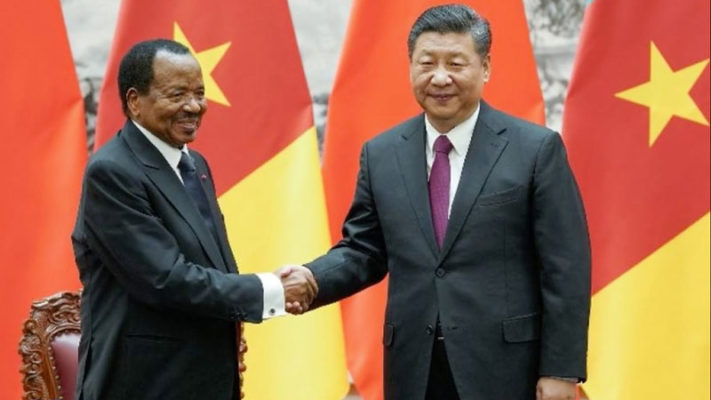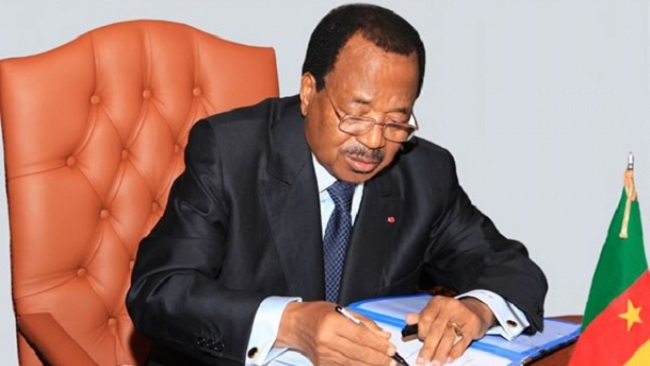With an outstanding debt of FCFA 2,106.5 billion, China confirms its position as Cameroon’s largest bilateral creditor since march 2023.
China has confirmed its place as the first bilateral creditor of Cameroon in the first quarter of 2023. A place that it has retained at least since 2022. Ranked first client of Cameroon at the end of 2021 according to the National Institute of Statistics (NIS) with a value of 618.4 billion CFA francs or 25.8% of exports, and first supplier with 659.1 billion for 17% of imports.
Out of Cameroon’s external debt, 61 percent is owed to China, making Beijing the country’s largest creditor. Therefore, to understand Cameroon’s risk of debt distress and the continuous credit problems that the country is facing, it is imperative to examine its debts to China.
Data from the Autonomous Amortization reveals , Cameroon’s debt to China in the first quarter of the current year amounted toF CFA 2,106.5 billion, that is to say, FCFA 3.3 billion from the Chinese State and FCFA 2,103.4 billion from Afreximbank of China. Compared to the 2 024.5 billion F of the first quarter of 2022, this debt is up by 82 billion FCFA in absolute value and 4% in relative value. China’s envelope thus represents 64.5% of the bilateral debt established at 3 266 billion during the period under review.
France comes second with F855.1 billion. India, another Asian giant, ranks third with an outstanding amount of F74 billion and F68.2 billion from Eximbank Turkey. With F48.4 billion, Japan completes the Top 5 creditors of the first economic power of the CEMAC at the end of March 2023.
China is Cameroon’s largest creditor, with 61 percent of the African country’s external debt owed to Beijing. Cameroon finding itself at risk of debt distress is not a new occurrence and is a result of the country’s borrowing habits over several decades.
The potential of Cameroon not being able to repay its debts to China became evident when Yaounde was not able to furfill some terms of its debts, which resulted in tougher financial conditions that began in 2017. In 2018, on the sidelines of the Forum on China-Africa Cooperation (FOCAC) held in Beijing, the Cameroonian government formally requested that its debt be restructured .

The severity of the situation and the real probability that Cameroon may not be able to repay its debts was underscored in January 2019 when Cameroon unilaterally withheld debt service payments to China , to which the Export-Import Bank of China responded by freezing payments for projects in Cameroon.
A total of $78 million of Cameroon’s debt was cancelled , although the debt was composed of payments that were supposed to be made to China the previous year but were not. This followed previous cancellations of Cameroon’s debt to China in 2001, 2007, and 2010.
In May 2020, Cameroon again delayed its debt payments to China through the debt service suspension initiative (DSSI) agreed to by members of the G-20, which includes China. This greatly benefitted Cameroon, as over half of its bilateral debts are to China. Specifically, in 2020 China deferred a payment from Cameroon worth over $55 million, and in 2021 Beijing deferred a further payment worth nearly $20 million.
These payments will now be served between 2022 and 2025, in addition to the payments that were already scheduled for those years. This likely means that Cameroon will face increased difficulties paying its debts into the mid-2020s, due to both the delayed payments to China in addition to the delayed payments that Yaoundé will eventually need to make to Paris Club creditors.
Despite the temporary rescheduling of debt payments, China continues to remain the top source of Cameroon’s debt. The difficulties that Cameroon will face regarding its debts to China will only increase going into the mid-2020s when large sums of debt are due to be serviced.
This situation regarding Cameroon’s debt to China in addition to other creditors raises serious questions about the Central African country’s ability to service its debts. This is not only due to the quantity of the debt, but the continued poor economic figures in the country as a result of political instability and economic loopholes.
The largest source of Cameroon’s debt to China is the ongoing construction of a deep-water port in the town of Kribi in the southern region of the country. The agreement between the Export-Import Bank of China and the government of Cameroon to finance the port’s construction was first signed in 2011 and saw a concessionary loan of nearly $400 million granted.
The second largest source of Chinese debt issued to Cameroon is the Yaoundé water supply project from the Sanaga River which aims to address water scarcity challenges in the Cameroonian capital and surrounding localities.
The third largest source of Cameroon’s debt to China is the Memve’ele hydropower dam project located on the Ntem river in the south region of the country.




